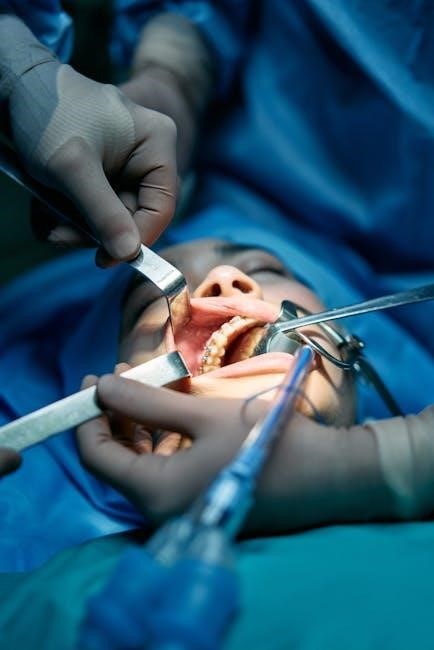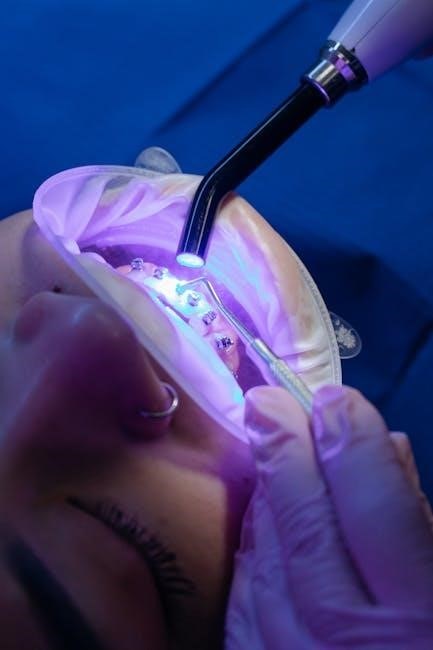
Guided surgery for dental implants is a modern procedure using a surgical guide or template to ensure precise implant placement. It enhances accuracy, predictability, and aesthetic outcomes, making it a preferred choice for both patients and dentists. This technique minimizes complications and improves overall success rates.
Evolution of Dental Implant Surgery
Dental implant surgery has undergone significant advancements over the centuries, evolving from rudimentary procedures to highly sophisticated techniques. Early attempts at dental implants date back to ancient civilizations, where materials like gold, ivory, and even animal teeth were used to replace missing teeth. However, these early efforts lacked the precision and biological compatibility needed for long-term success.
The modern era of dental implants began in the 20th century with the discovery of osseointegration by Swedish researcher Per-Ingvar Brånemark in the 1950s. This breakthrough led to the development of titanium implants, which could fuse with the jawbone, providing a stable foundation for prosthetic teeth. The introduction of titanium implants marked the beginning of a new era in dental implantology.
Over the years, dental implant surgery has transitioned from traditional, freehand placement to more precise, technology-driven methods. The integration of digital imaging, 3D printing, and guided surgery has revolutionized the field, enabling clinicians to achieve greater accuracy and predictability. Today, guided surgery represents the pinnacle of this evolution, combining decades of scientific advancement with cutting-edge technology to deliver optimal outcomes for patients.

Technology Behind Guided Dental Implant Surgery
Guided dental implant surgery relies on advanced technologies like CBCT scans, 3D imaging, and specialized software for precise planning. CAD/CAM surgical guides are created to direct implant placement, ensuring accuracy and minimizing complications. This technology enhances predictability and improves surgical outcomes.
3.1 Role of CBCT and 3D Imaging
Cone Beam Computed Tomography (CBCT) and 3D imaging are cornerstone technologies in guided dental implant surgery. CBCT provides high-resolution, three-dimensional images of the jawbone, teeth, and surrounding anatomical structures, enabling precise visualization of the surgical site. This technology allows dentists to identify critical landmarks, such as nerve pathways and sinus cavities, ensuring safe and accurate implant placement.
3D imaging enhances pre-surgical planning by offering detailed measurements of bone density and available space. This data is essential for selecting the appropriate implant size and positioning. Additionally, 3D models can simulate the surgical outcome, helping both clinicians and patients visualize the final result. The integration of CBCT with surgical planning software ensures a seamless transition from diagnosis to execution, reducing the risk of complications during surgery.
Overall, CBCT and 3D imaging significantly improve the accuracy and reliability of guided dental implant surgery, making it a vital tool in modern implantology.
3.2 Software for Surgical Planning
Surgical planning software plays a pivotal role in guided dental implant surgery by transforming diagnostic data into actionable plans. These advanced tools utilize CBCT scans and 3D imaging to create detailed digital models of the patient’s jaw, allowing clinicians to virtually place implants with precision. Software such as Exoplan and Implant Studio enables dentists to evaluate bone density, measure available space, and select the optimal implant size and position.
These programs also facilitate the design of custom surgical guides, ensuring that the implant placement aligns with the patient’s anatomical and aesthetic needs. By simulating the surgical outcome, the software reduces the risk of complications and improves predictability. Additionally, some platforms allow for real-time adjustments, enabling clinicians to fine-tune their plans based on patient-specific factors.
The integration of surgical planning software with other technologies, such as CAD/CAM systems, streamlines the workflow from diagnosis to execution. This digital approach not only enhances accuracy but also minimizes surgery time, contributing to better patient outcomes and satisfaction. As a result, surgical planning software is an indispensable tool in modern guided implantology.
3.3 CAD/CAM Surgical Guides
CAD/CAM (Computer-Aided Design/Computer-Aided Manufacturing) technology is instrumental in creating highly accurate surgical guides for dental implant placement; These guides are custom-designed to fit the patient’s specific anatomy, ensuring precise alignment and positioning of implants. By leveraging 3D imaging data, CAD/CAM systems generate templates with pre-drilled holes that guide the surgeon during implant placement.
The process begins with the importation of the patient’s 3D data into specialized software, where the ideal implant positions are mapped out. The surgical guide is then fabricated using milling or 3D printing techniques, resulting in a precise, patient-specific tool. This level of customization minimizes human error and enhances the predictability of the surgical outcome.
CAD/CAM surgical guides offer several advantages, including reduced surgery time, improved implant stability, and better aesthetic results. They also help in preserving surrounding tissues and ensuring optimal bone utilization. As a result, CAD/CAM surgical guides have become a cornerstone of modern guided implant surgery, offering a seamless transition from digital planning to clinical execution.
Advantages of Guided Surgery
Guided surgery for dental implants offers numerous advantages, making it a highly preferred method in modern dentistry. One of the primary benefits is the enhanced precision it provides, allowing for accurate implant placement that minimizes errors and improves outcomes. This level of accuracy also reduces the risk of complications, such as nerve damage or improper positioning, which can occur with traditional methods.
The use of guided surgery often results in less invasive procedures, which can lead to shorter recovery times and reduced discomfort for the patient. Additionally, the pre-surgical planning enables dentists to identify the optimal placement of implants, taking into account the patient’s anatomy and specific needs. This personalized approach ensures better aesthetic and functional results.
Another significant advantage is the ability to visualize the entire procedure beforehand, which improves predictability and allows for better communication between the dentist and the patient. Furthermore, guided surgery can often be completed in a single visit, making it a more efficient option for patients with busy schedules. Overall, the combination of precision, reduced invasiveness, and improved outcomes makes guided surgery a superior choice for dental implant placement.

The Surgical Process
The surgical process involves using a guide or template to ensure precise implant placement, minimizing complications and enhancing accuracy. It is typically performed under local anesthesia, with some cases allowing immediate loading of temporary restorations for patients.
5.1 Pre-Surgical Planning
Pre-surgical planning is a critical phase in guided dental implant surgery, involving detailed analysis and preparation to ensure optimal outcomes. This step utilizes advanced imaging technologies, such as CBCT (Cone Beam Computed Tomography) scans, to create precise 3D models of the patient’s jaw and surrounding structures. These images allow dentists to identify key anatomical landmarks, assess bone density, and determine the best possible implant positions.
Specialized software, like Exoplan or Implant Studio, is employed to design a digital treatment plan. This plan considers factors such as the patient’s bite, aesthetic requirements, and the need for prosthetics. The digital plan is then used to create a physical surgical guide, a custom template that directs the exact placement of implants during surgery.
This meticulous planning minimizes surgical complications and ensures that implants are positioned accurately, improving both functionality and aesthetics. It also reduces surgical time and enhances patient safety, making guided surgery a highly predictable and efficient procedure.
5.2 Preparation and Setup
The preparation and setup phase for guided dental implant surgery involves several critical steps to ensure a smooth and efficient procedure. First, the surgical guide, created during pre-surgical planning, is carefully positioned in the patient’s mouth. This guide is secured in place using temporary fixation or bite registration to maintain stability throughout the procedure.
The surgical site is then prepared, including the administration of local anesthesia to ensure patient comfort. The dentist also sets up imaging equipment and real-time tracking tools to monitor the implant placement accurately. All necessary instruments, such as drills and implant drivers, are organized and sterilized to avoid delays.
Finally, the patient is positioned comfortably in the dental chair, and the surgical team reviews the treatment plan one last time. This meticulous preparation ensures that the surgery proceeds without complications, allowing for precise implant placement and optimal results. The setup phase is essential for maintaining the high level of accuracy that guided surgery provides.
5.3 Execution of the Surgery
The execution of guided dental implant surgery involves the precise placement of dental implants using the pre-fabricated surgical guide. This phase begins with the dentist carefully aligning the guide over the patient’s jaw to ensure accurate positioning. The guide directs the drill and implant placement, minimizing deviations from the pre-surgical plan.
Once the guide is in place, the dentist proceeds with drilling pilot holes at the designated sites, followed by the gradual widening of the implant sites to accommodate the implant fixtures. The implants are then inserted into the jawbone with controlled torque and depth, as specified by the surgical plan.
Throughout the procedure, the surgical guide ensures that implants are placed at the correct angle, depth, and position relative to adjacent teeth and anatomical structures. This precision minimizes the risk of complications, such as nerve damage or insufficient bone support.
The use of real-time imaging and monitoring tools further enhances the accuracy of the procedure. Once all implants are placed, the dentist verifies their positions and ensures proper healing caps or temporary restorations are in place before concluding the surgery.
This phase is critical for achieving the desired functional and aesthetic outcomes, setting the stage for successful osseointegration and long-term implant success.

Clinical Accuracy and Success Rates
Guided surgery for dental implants has demonstrated exceptional clinical accuracy and high success rates, making it a highly reliable option for tooth replacement. Studies consistently show that guided implant placement achieves precise alignment with pre-surgical plans, reducing deviations in position, angle, and depth. This level of accuracy minimizes complications, such as nerve damage or insufficient bone support, and enhances the predictability of outcomes.
The use of advanced technologies, such as CBCT scans and CAD/CAM surgical guides, ensures that implants are placed in optimal positions for both functional and aesthetic results. Clinical trials have reported success rates exceeding 95%, with implants exhibiting excellent osseointegration and long-term stability.
Guided surgery also reduces human error compared to traditional freehand methods, leading to more consistent results. Patients benefit from shorter recovery times and improved comfort due to the minimally invasive nature of the procedure. Overall, the combination of precision, reliability, and proven outcomes makes guided surgery a preferred choice for achieving successful dental implant placement.
Guided surgery for dental implants represents a significant advancement in modern dental implantology, offering unparalleled precision and predictability. By leveraging cutting-edge technologies such as CBCT scans, surgical planning software, and CAD/CAM guides, this approach ensures implants are placed with optimal accuracy, minimizing complications and enhancing patient outcomes.
The high success rates and clinical accuracy of guided surgery underscore its value in contemporary dental care. Patients benefit from reduced recovery times, improved aesthetics, and long-term stability of their implants. As technology continues to evolve, guided surgery is poised to become the standard of care, further advancing the field of dental implantology.
Ultimately, guided surgery combines innovation, efficiency, and reliability, making it a transformative approach for both practitioners and patients. Its adoption reflects a commitment to excellence in dental care, ensuring that patients achieve the best possible results for their oral health and well-being.